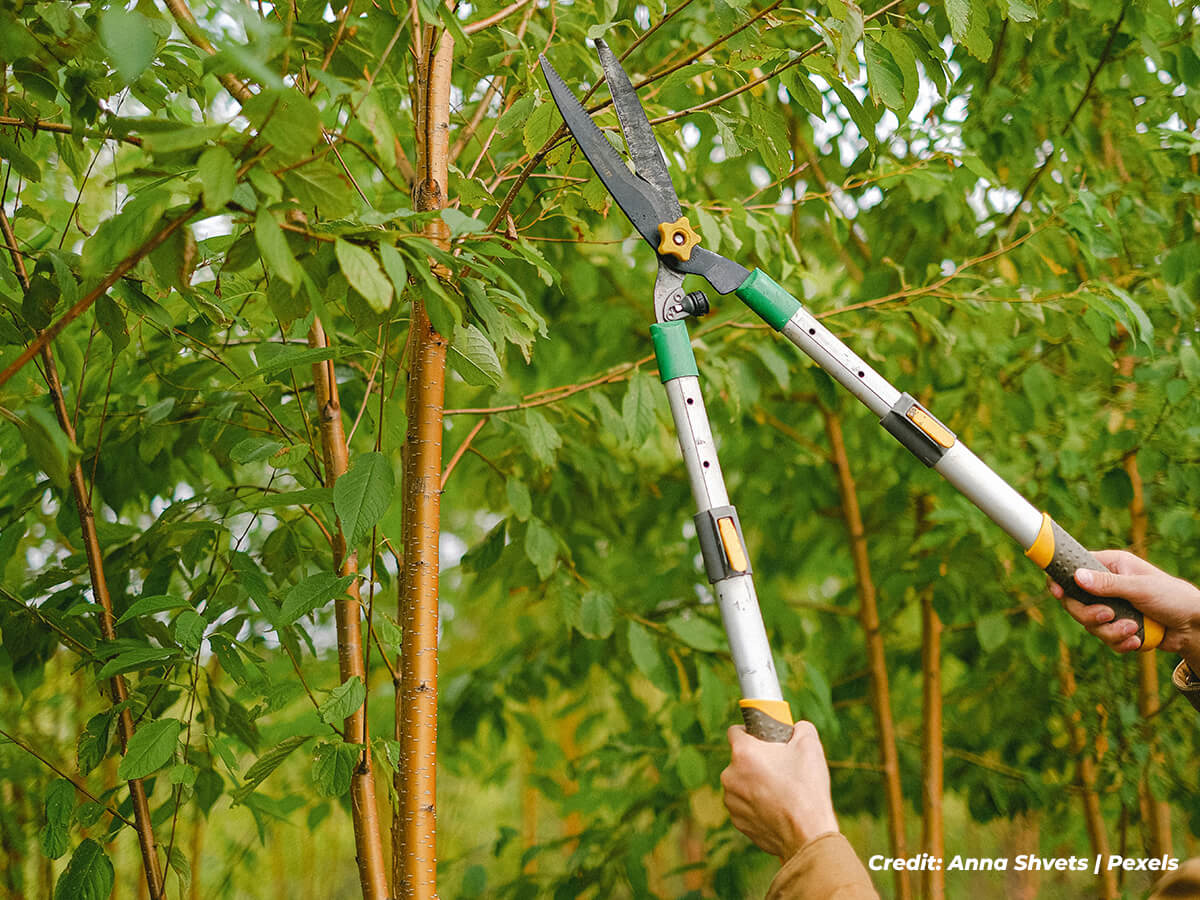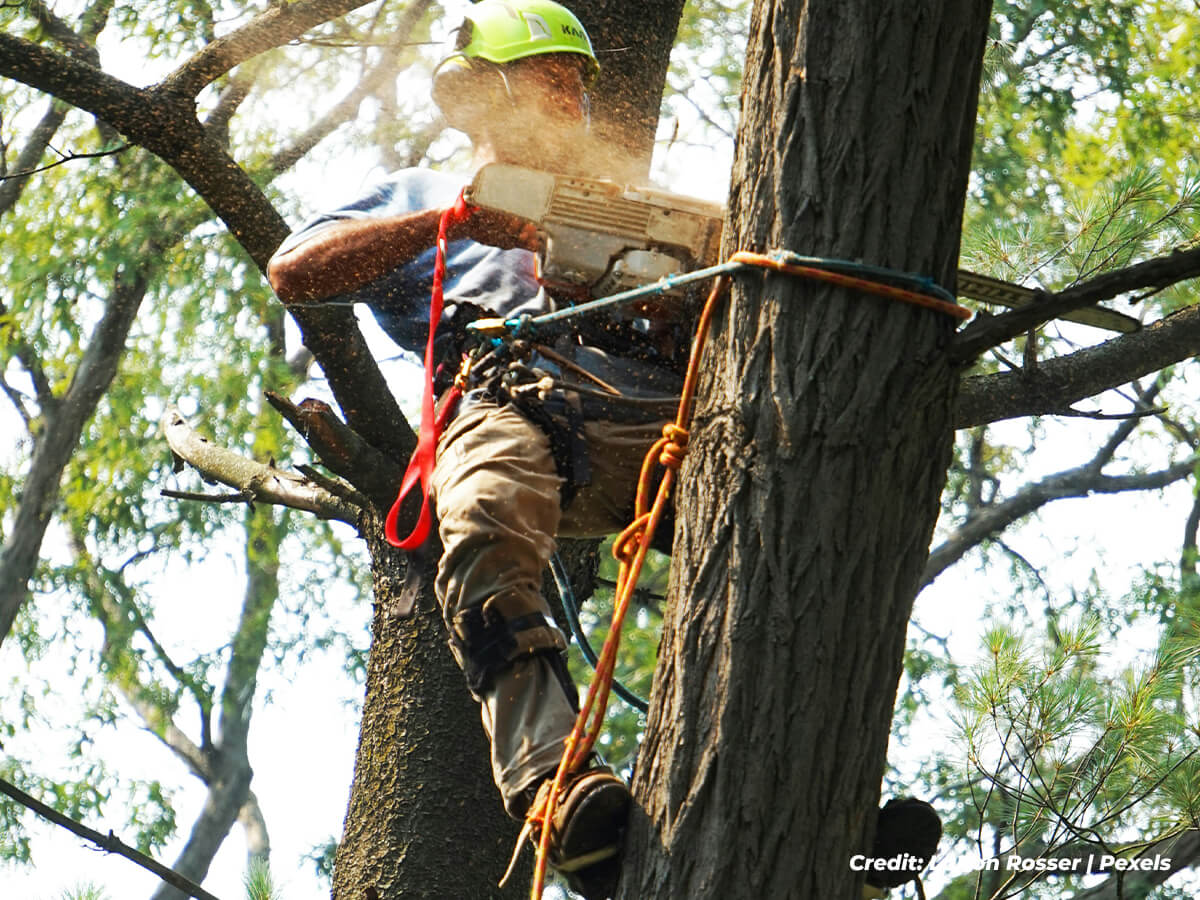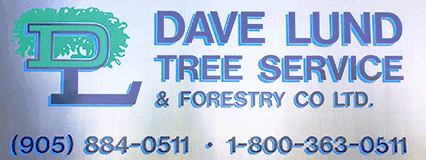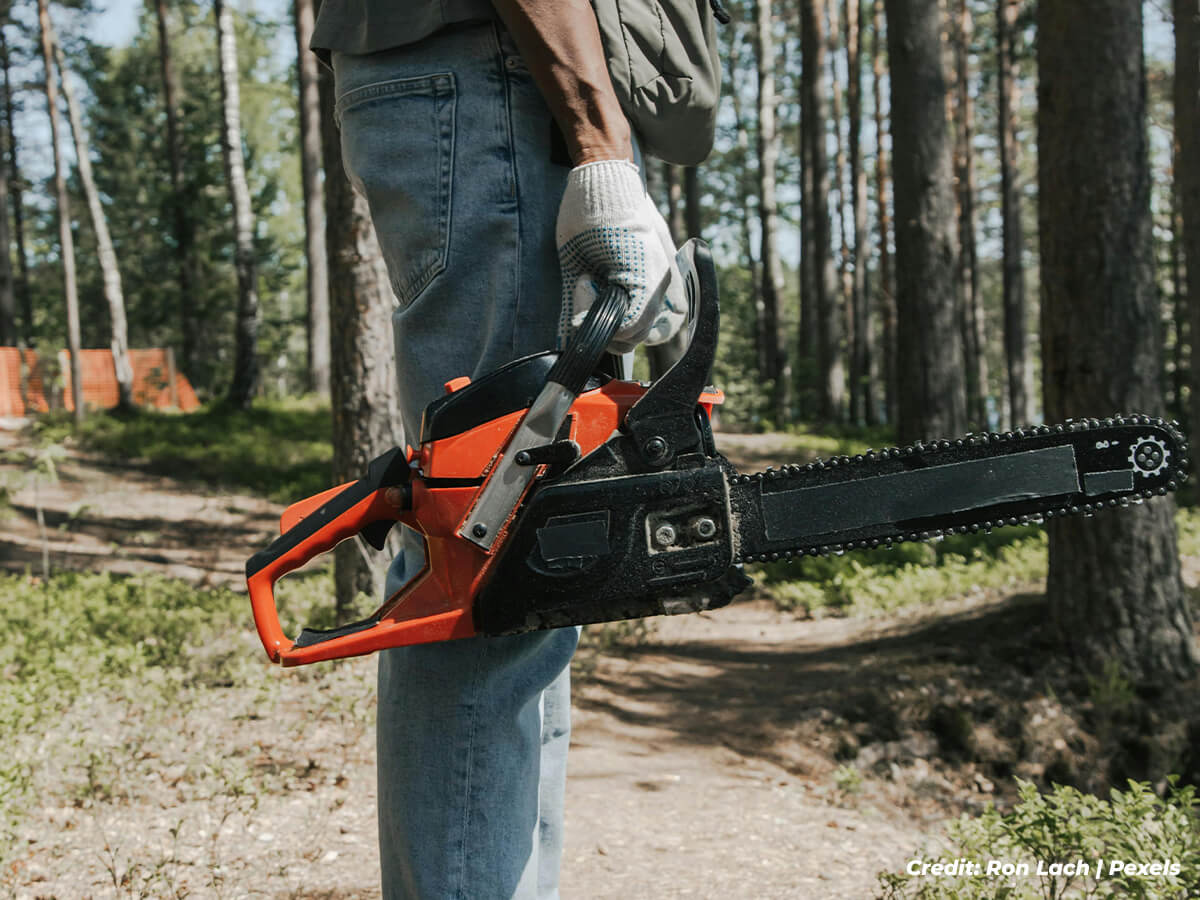Maintaining the trees on your property is essential, both for the sake of aesthetics and overall environmental health. Trees offer ample benefits for your home, providing shade, improving air quality, and enhancing curb appeal. However, many homeowners make the mistake of tackling tree care themselves without realizing the potential harm they might be causing. While DIY tree maintenance (like other DIY methods) might seem cost-effective and convenient, improper techniques an lack of expertise can result in long-term damage, disease, or even safety hazards.

Misguided Pruning Techniques
One of the most common pruning mistakes in DIY tree care is improper pruning. While trimming branches may may seem straightforward, using the wrong method can severely damage the tree’s structure and health. Many people make the mistake of overpruning, removing too many branches at once. This can stress the tree (thereby making it more vulnerable to disease and insect infestations).
Another frequent error is cutting branches incorrectly. Topping (which involves cutting off the top of the tree to control its height) weakens the structure and leads to excessive sprouting of weak branches. Similarly, cutting too close to the trunk or leaving long stubs can hinder healing (often creating entry points for pests and diseases). Professional arborists, on the other hand, understand the science behind proper pruning (ensuring trees remain healthy and balanced after working).
Improper Planting and Transplanting
Planting a tree seems like a simple task, but there are several factors at plat that determine whether it will thrive. Many homeowners unknowingly plant trees in poor locations (such as areas with inadequate sunlight, compacted soil, or improper drainage). Additionally, trees planted too close to structures or other plants may struggle for nutrients and space as they grow.
Transplanting trees can be equally challenging. A common mistake is failing to dig a sufficiently large hole for the roots (leading to poor establishment). If the root ball is planted too deeply or too shallowly. The tree may then struggle to take in nutrients and water. Professionals have the training to assess the best placement for a tree based on soil conditions, available space, and long-term growth potential.
Overwatering or Underwatering
Watering trees seems like a simple task, but determining the correct amount of water depends on factors such as soil type, climate, and tree species. Overwatering can lead to root rot, reducing the tree’s ability to absorb nutrients. On the other hand, undrewatering can cause stress (making trees more susceptible to disease and insect infestations).
A common DIY mistake is watering trees too frequently but not deeply enough. Light watering encourages shallow root growth (which ultimately makes trees less stable and more prone to drought stress). Instead, it’s better for your plants to water more deeply but less frequently. Proper deep watering technique involves thoroughly soaking the soil so water penetrates more deeply into the ground (up to 20 centimetres). This also encourages your plants to develop deeper root systems, anchoring them to the ground and making them more resilient in case of drought.
Using Incorrect Tools and Techniques
Tree care requires specialized tools to ensure safe and effective maintenance. In addition to not always having the right tools, many homeowners use dull or inappropriate tools as well (which can resulting in uneven cuts and torn bark). This can introduce infections and weaken the tree’s structure. Chainsaws, pruning shears, and ladders also require skill and knowledge to use safely. Without proper training, DIY tree care can become dangerous (leading to injuries or property damage).
Additionally, some homeowners often attempt to remove large branches or entire trees without understanding the risks. Falling limbs can damage property, injure bystanders, or cause harm to the tree itself. Professionals use industry-standard tools and techniques to ensure that pruning, cutting, and tree removal are done safely and effectively.

Unintended Damage to the Tree and Surroundings
Inexperienced tree care can inadvertently harm the tree and the surrounding landscape. One common mistake is compacting the soil around the tree’s roots by parking vehicles or placing heavy objects nearby. Compacted soil actually reduces oxygen flow to the roots, stunting growth and weakening the tree.
Another issue arises when homeowners apply mulch incorrectly. While mulch does help retain moisture and regulate soil temperature, piling it too high around the trunk can lead to rot and pest infestations. Known as “volcano mulching,” this practice can cause significant damage over time. Proper mulching involves spreading a thin, even layer while keeping it away from the base of the trunk.
Misuse of Fertilizers and Chemicals
Fertilizing trees can promote growth, but using the wrong type or applying too much can be harmful. Many DIY enthusiasts use general-purpose fertilizers without considering the tree’s specific nutrient requirements. Over-fertilization can also result in excessive leaf growth at the expense of root development (which contributes to making the tree unstable).
Similarly, pesticides and herbicides must be applied with care. Using harsh chemicals without understanding their effects can harm beneficial insects, disrupt the soil ecosystem, or even damage the tree itself. Professionals know to (and how to) assess the soil composition and tree health before recommending appropriate treatments.
Ignoring Early Signs of Disease and Pests
Trees can develop diseases and attract pests that weaken their structure, which can take their toll in time. To name one example, up to 30% of all beech tree deaths in Ohio are due to beech leaf disease. Preventing such diseases from hitting your own trees is a must for maintaining your trees at home. Unfortunately, many homeowners overlook early warning signs, allowing problems to escalate. Signs such as discoloured leaves, peeling bark, fungal growth, or unusual insect activity can indicate underlying issues. DIY tree care often lacks the expertise needed to diagnose and treat these problems effectively.
Attempting to treat tree diseases without professional knowledge can sometimes worsen the situation. Using home remedies or incorrect treatments may fail to address the root cause (leading to further decline). Arborists have the experience to identify symptoms early and apply the right treatments to preserve tree health.
Safety Risks and Liability
Tree maintenance can be dangerous, especially when working at heights or handling heavy branches. Climbing trees without proper safety equipment or attempting to use power tools without experience increases the risk of accidents. Falls, cuts, and falling branches can also cause serious injuries.
In addition, tree work done incorrectly can lead to property damage. A poorly executed tree removal or branch cutting can result in broken fences, damaged roofs, or even harm to neighbours’ property. Hiring a professional mitigates these risks, ensuring that tree care is conducted safely and responsibly.
The Long-Term Impact on Tree Health
While DIY tree care may seem like a short-term solution, improper practices can lead to long-term problems. Trees that receive inadequate care may experience stunted growth, structural weaknesses, or premature decline. Correcting mistakes made during DIY maintenance can be costly and time-consuming.
Professional arborists provide tailored care based on each tree’s species, age, and condition. They use methods that support strong root development, healthy canopy growth, and overall resilience. Investing in expert tree care ensures that trees remain healthy and beautiful for years to come.
Caring for trees requires more than just good intentions. Without the right knowledge, tools, and techniques, DIY tree maintenance can unintentionally cause harm. In contrast, professional arborists have the expertise to assess, maintain, and protect trees effectively. By seeking professional tree care, homeowners can enjoy the beauty and benefits of healthy trees while avoiding unnecessary risks and costly mistakes.
When it comes to providing top-notch tree care, Dave Lund Tree Service has it all. We have a wealth of experience tackling tree-related problems, from cabling your trees to post-storm cleanup to pruning. When you need a reliable arborist to help with your trees, we’re happy to lend a hand. Call us now at (905) 775-1020 and give your trees the care they deserve.

